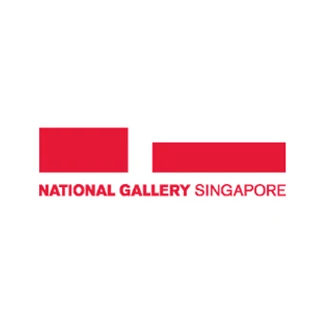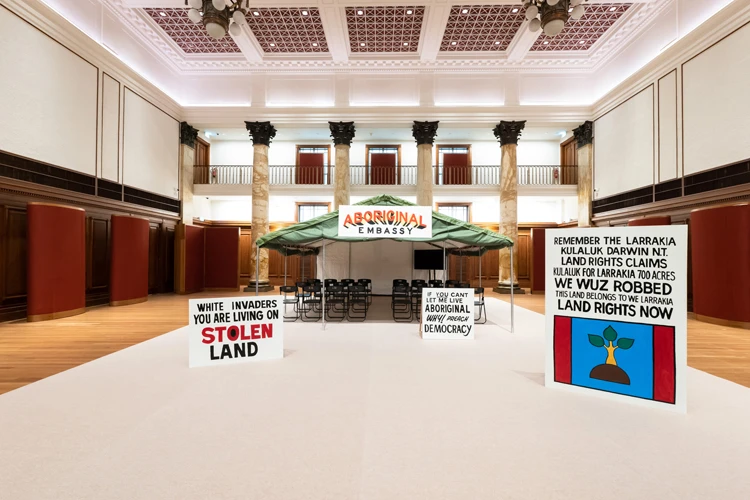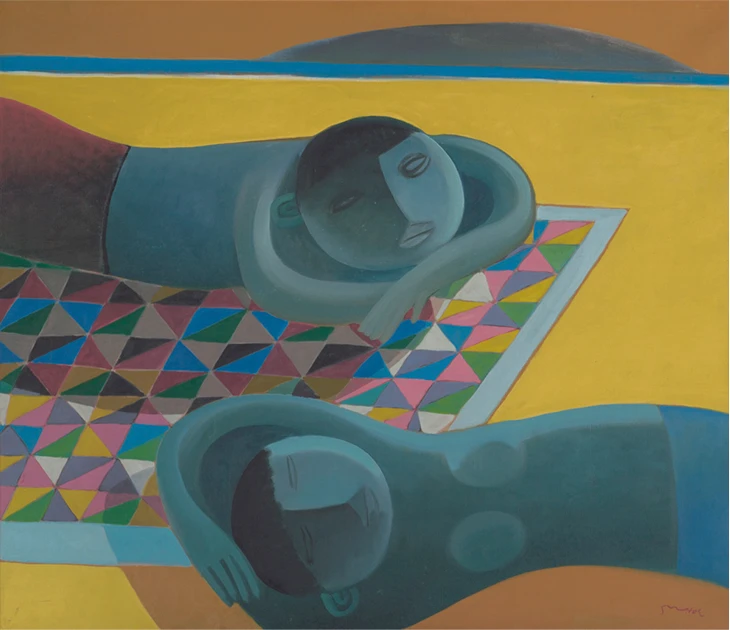Heading Outdoors with Liu Kang
Singapore artist Liu Kang depicted many bustling scenes of daily life outdoors. As curator Lim Shujuan dives into his paintings, share in the joy of friends picnicking, artists painting in the open or simply savouring in-season durians
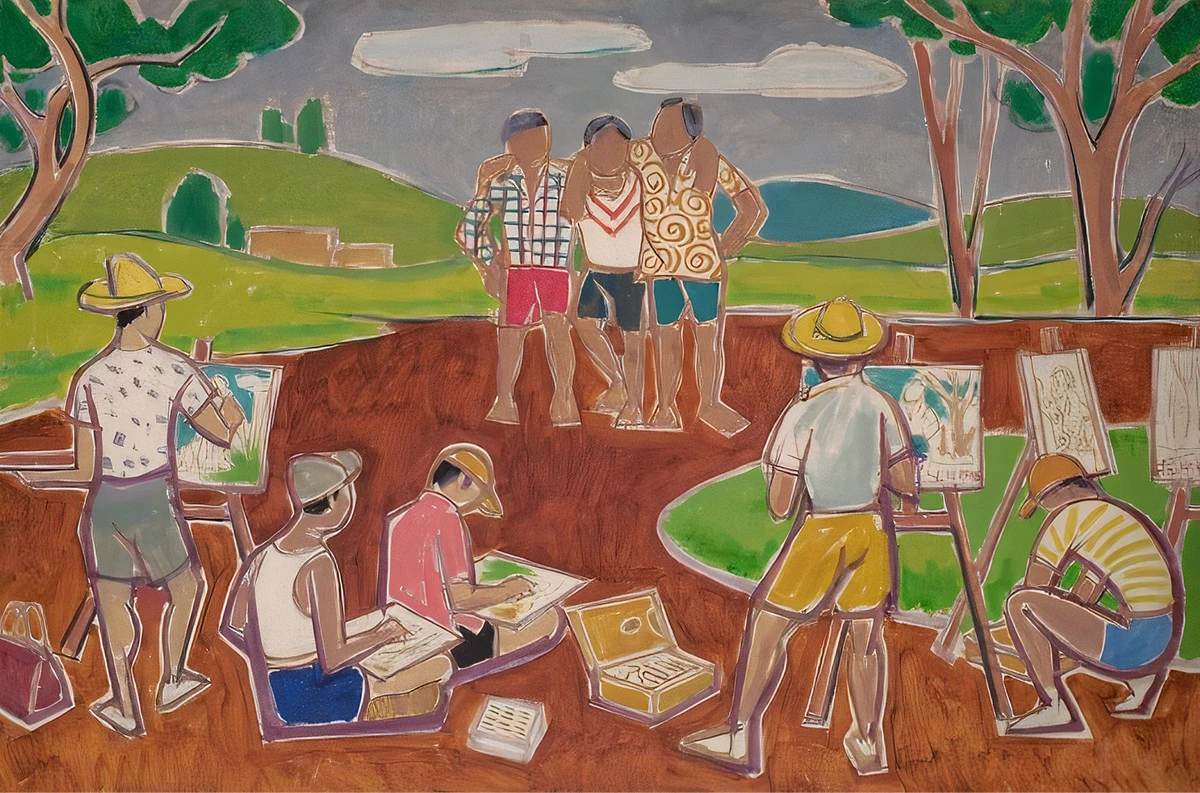
Outdoor Painting (In Johore), 1954
Oil on canvas
85.5 x 127.2 cm
Gift of the artist’s family
Collection of National Gallery Singapore
Singapore artist Liu Kang is best known for his contributions to the Nanyang painting style. He was a leading figure in the Society of Chinese Artists and the Singapore Art Society, and received the Public Service Star in 1970 and Meritorious Service Medal in 1996 for his services in field of art. In 2003, Liu Kang donated his body of work to the National Collection. The Collection of National Gallery Singapore now holds his many vivid paintings of daily life outdoors around the region from the 1950s.

One such work is Outdoor Painting (In Johore) depicting a group of artists on a painting trip in Malaysia. Referred to as en plein air or plein air (outdoor) paintings, artists create such works in open space, capturing their impressions of a chosen subject or the scene before them. In Outdoor Painting (In Johore), five intrepid artists surround three models. The models have their arms wrapped around each other’s shoulders, a demonstration of their camaraderie. The five artists work on their paintings, placed either on easels before them or resting on their laps. Liu Kang reflects the lively atmosphere of these artists’ excursion through the colours and the patterns on the artists’ and models’ clothes—each is dressed in a unique combination of shirt and shorts.
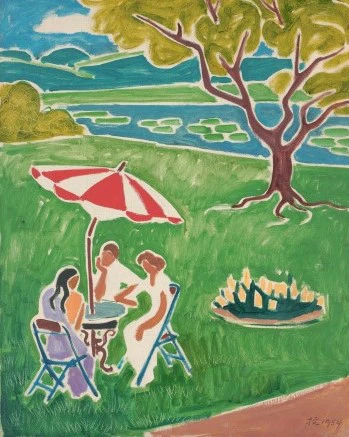
In Picnic, three figures sit around a table in the open. While only their silhouettes are visible, the group is clearly enjoying each other’s company. One is leaning her head against her hand, as if listening intently to the others’ conversation. The influence of batik on Liu Kang’s work is demonstrated through his use of white outlines to delineate form in this painting. In 1952, Liu Kang spent some time in Bali with fellow artists Chen Wen Hsi, Chen Chong Swee and Cheong Soo Pieng, where much like the artists in Outdoor Painting, he spent time painting en plein air. There, he was also influenced by Indonesian artistic practices like batik, resulting in the flattened perspective, large areas of colour and heavy outlines used in both these paintings.
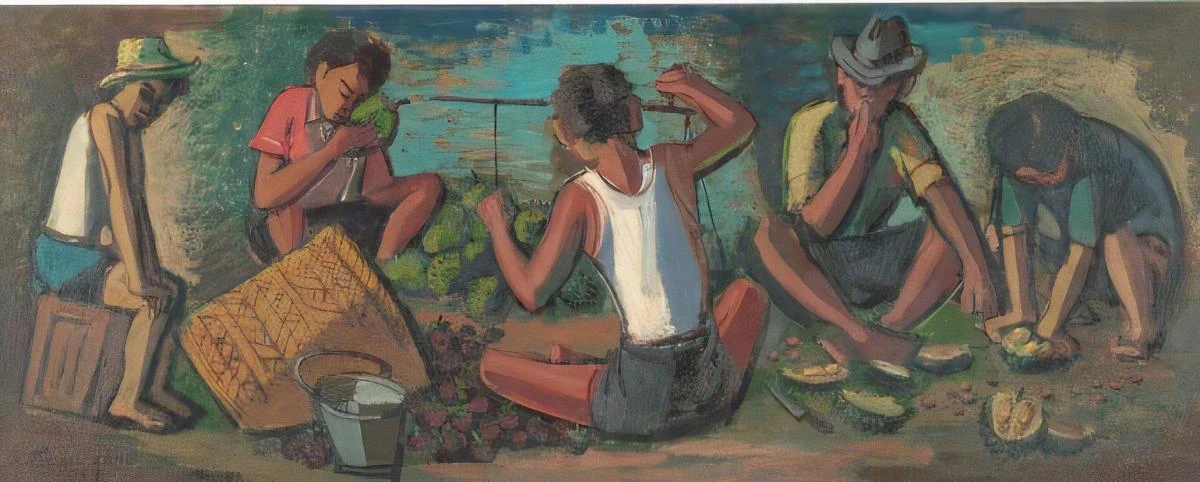
Durian Vendor depicts a well-loved pastime of many Singaporeans—eating durians outdoors. The vendor is seated on the ground holding a weighing scale, with his back to the viewer. Rather than a view of his face, we see those of customers lined up in front of him, variously smelling, eating and prying open durians. On the vendor’s left, mangosteens overflow from a basket. The inclusion of this detail presents an aspect of local culture, in which mangosteens are considered the perfect “cooling” fruit to counteract the “heatiness” of durian. The observation and sketching of everyday scenes was part of Liu Kang’s artistic process. The artist has shared that it allows him to find his “way into the midst of humanity in order to nourish my inner self and expand my mind’s horizon"[1].
The evolution of Liu Kang’s artistic practice is evident through the years, however an effervescence for life bubbles through in all his works. I am constantly enchanted by his paintings, and look forward to walking into a gallery again to admire and be challenged by Liu Kang’s art, discovering new worlds outside and beyond my own.
Notes
- Liu Kang, “Postscript” in The Paintings of Liu Kang, quoted in Liu Kang: Colourful Modernist, (Singapore: National Gallery Singapore, 2011), n.p.










